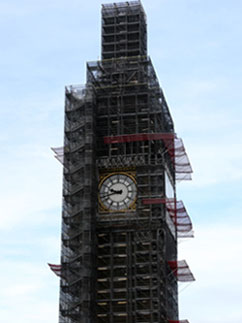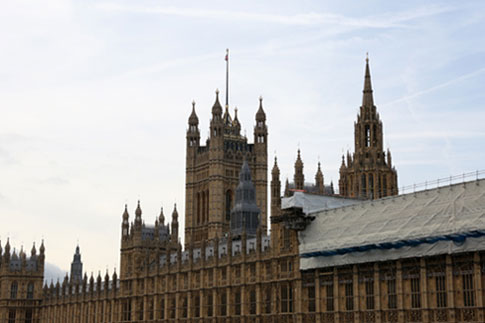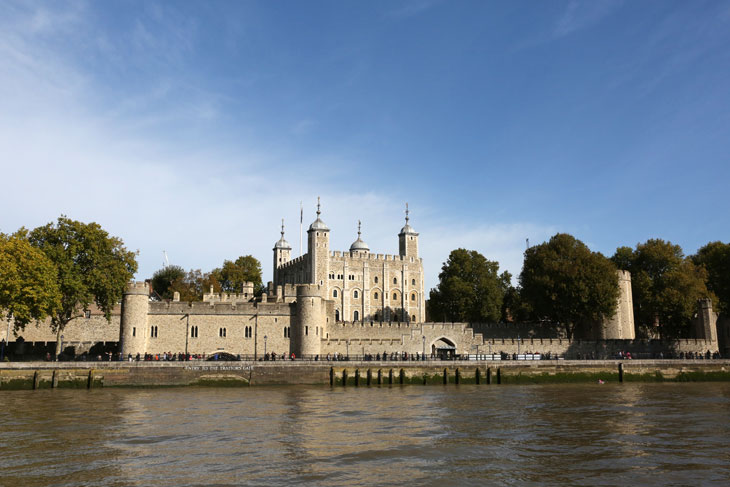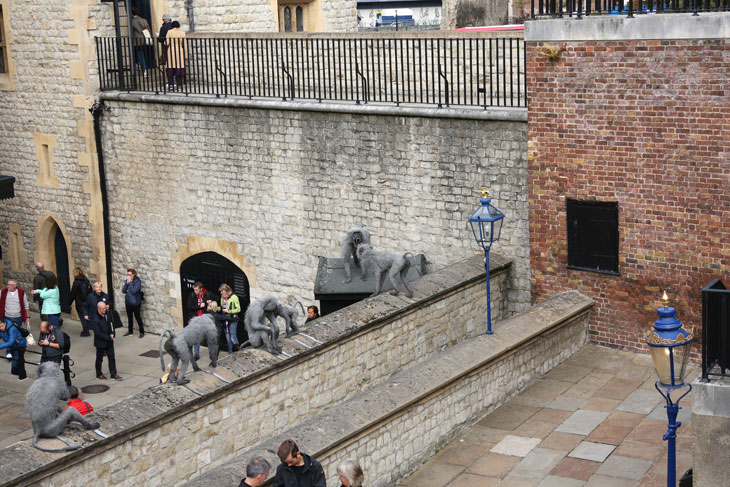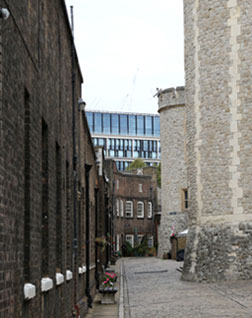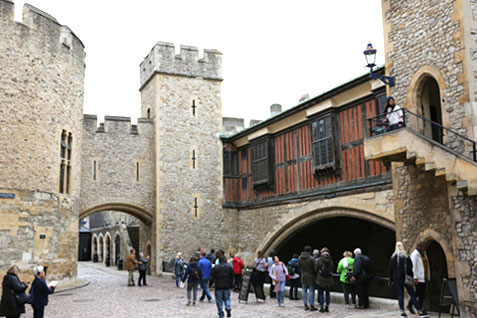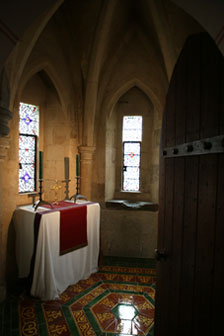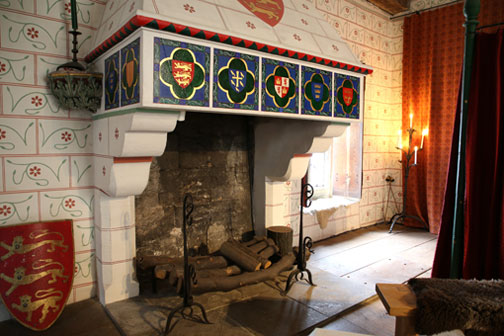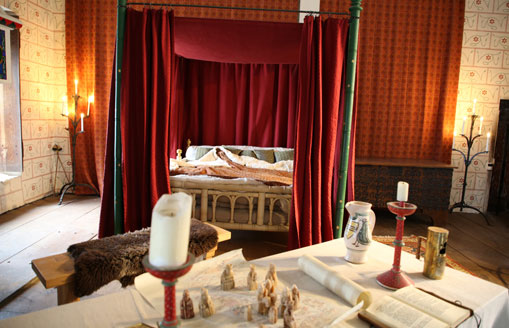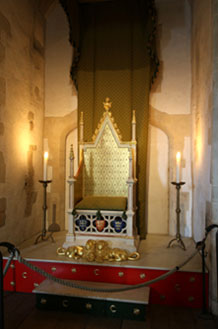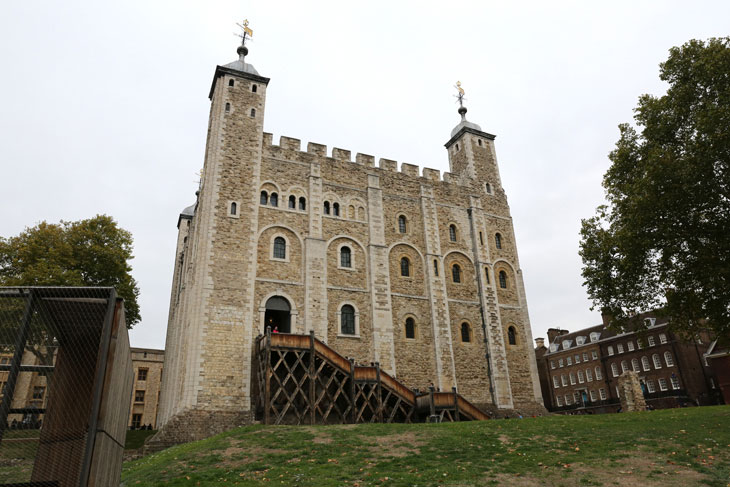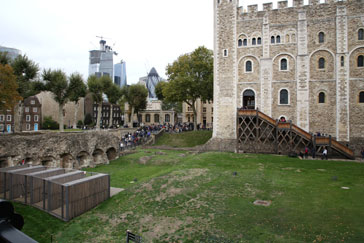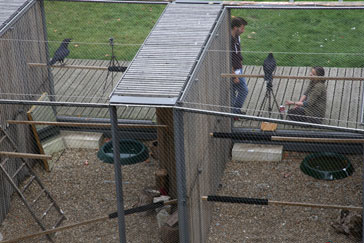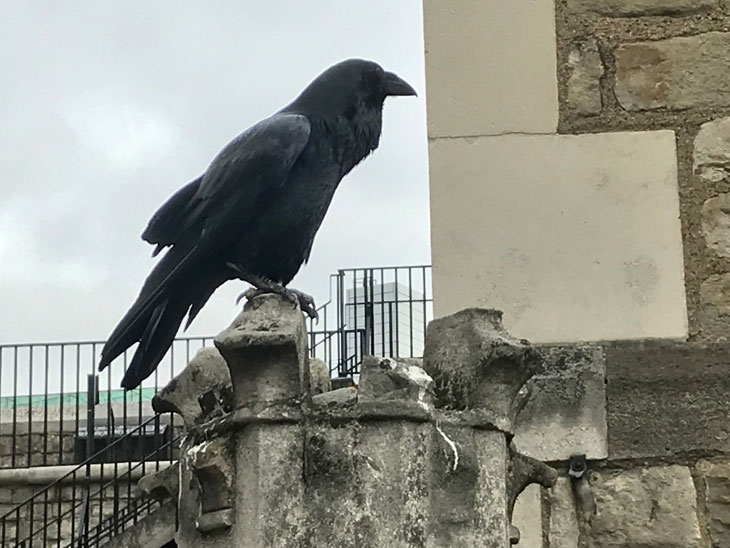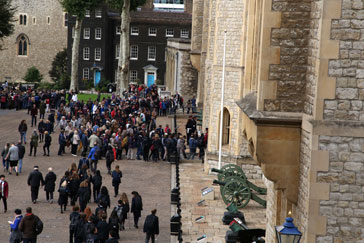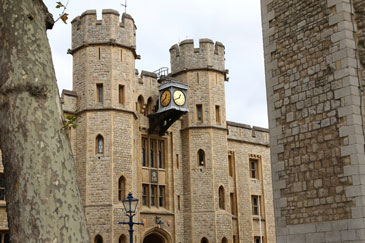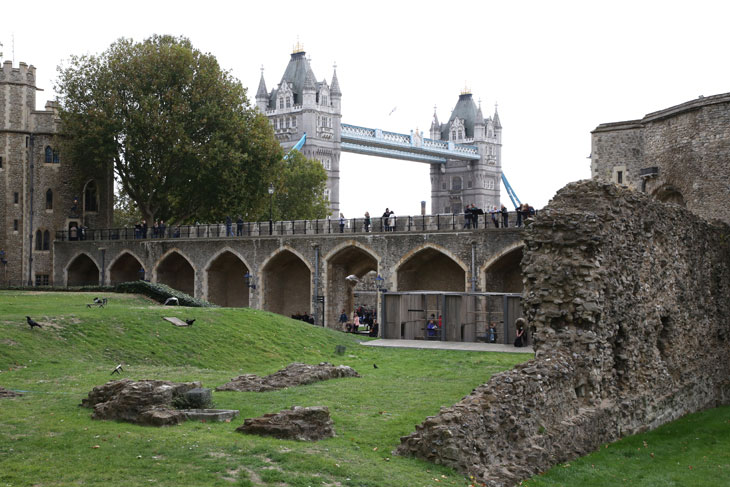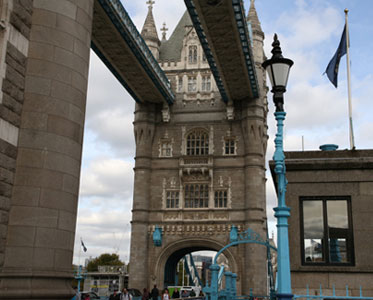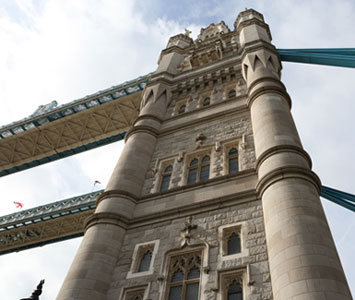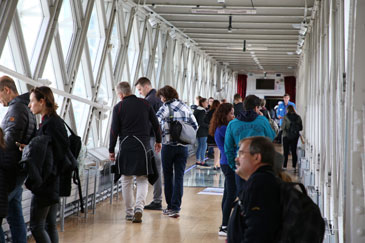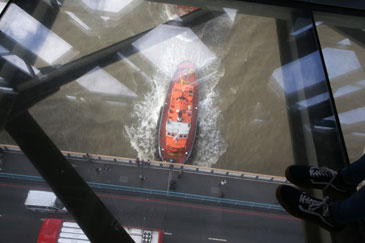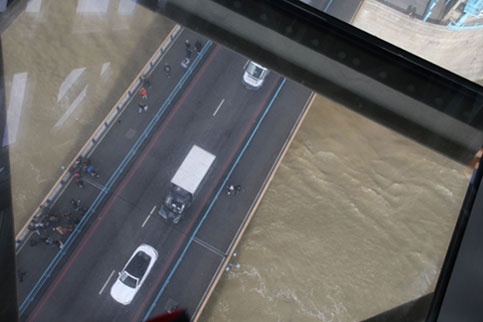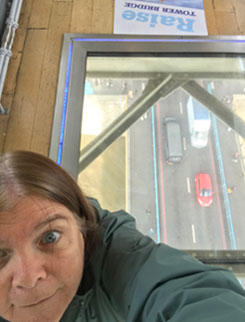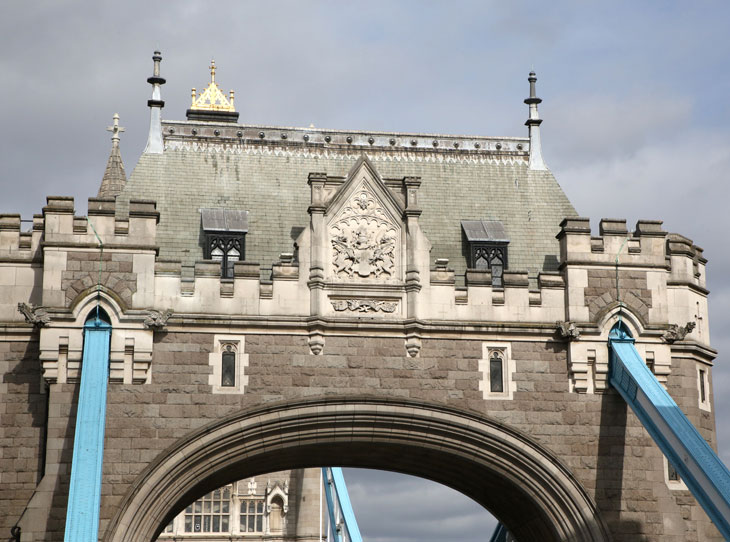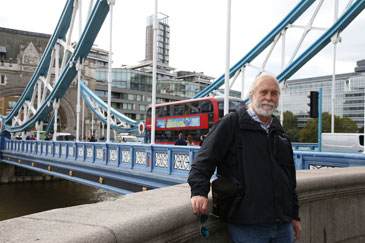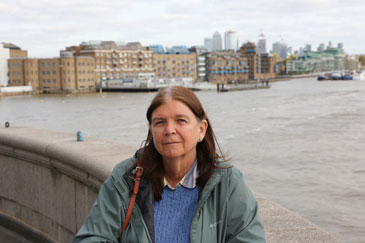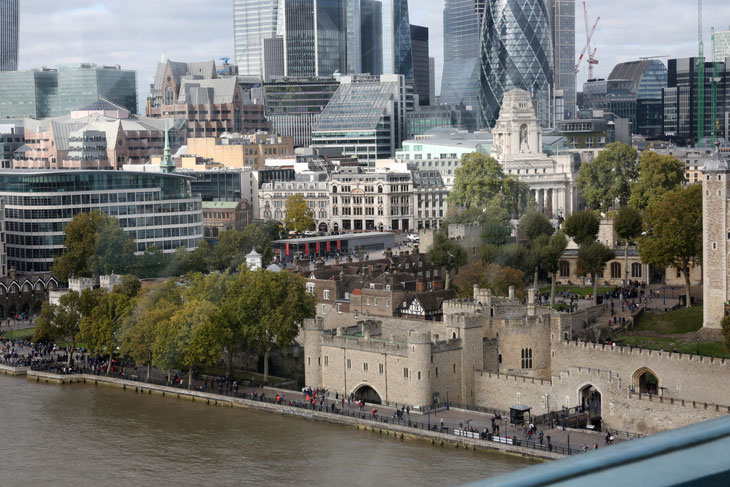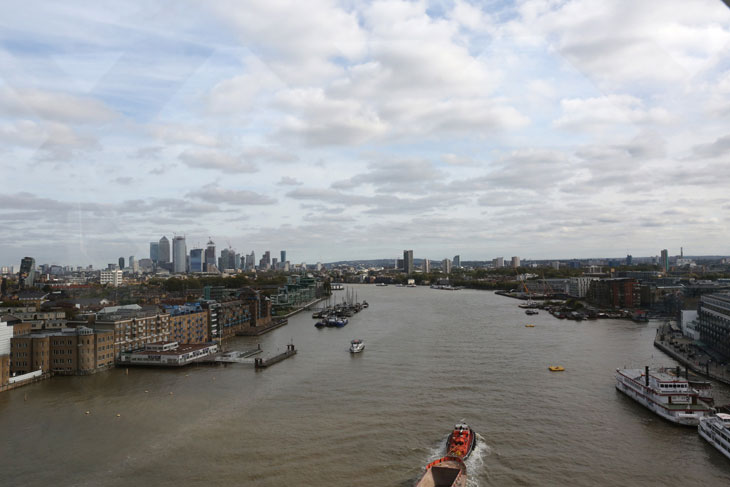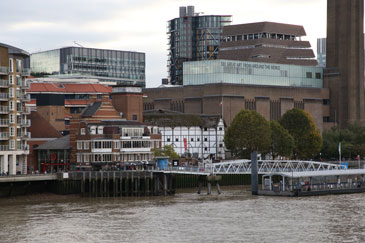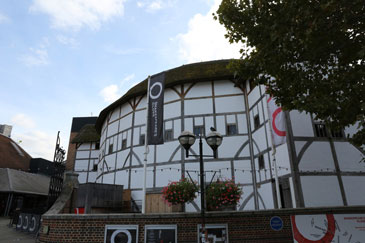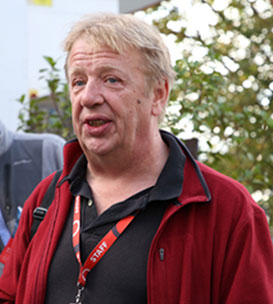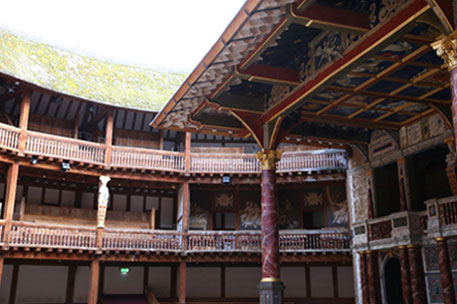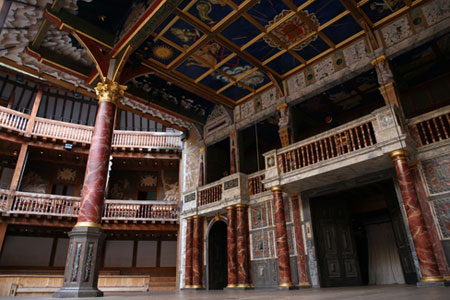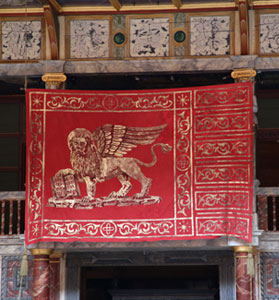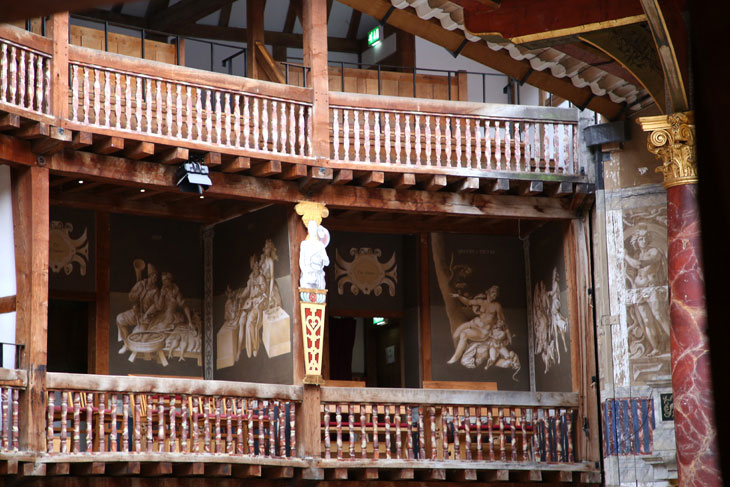Childhood Dreams
Tower of London, Tower Bridge, and Shakespeare's Globe Theatre
We were delighted to discover that our ticket for the City Cruises boat was valid for 24 hours.
What better way to get to our first destination of the day, the Tower of London? We boarded the
boat once again and enjoyed another cruise up the Thames.
Here are a couple of pictures taken from Westminster Pier. In the picture on the left, you can
see the face of Big Ben. The picture on the right shows the Houses of Parliament.
Here's another picture of the Tower of London.
The tower may be known best as a place where suspected traitors were tortured and executed, but
over the years it has served many other functions including royal residence, armoury, treasury,
managerie, mint, and barracks. Doomed prisoners like Sir Walter Raleigh, Guy Fawkes, Lady Jane
Grey, and two wives of Henry VIII - Anne Boleyn and Catherine Howard - were imprisoned and executed
here, but others like Scottish King John Balliol lived in relative luxury along with their servants.
Some prisoners were even permitted to go on shopping or hunting trips. Use of the tower as a prison
continued until 1941 when a German spy was executed by firing squad, and Rudolf Hess was detained
there briefly after he flew to Scotland to supposedly negotiate peace with the UK.
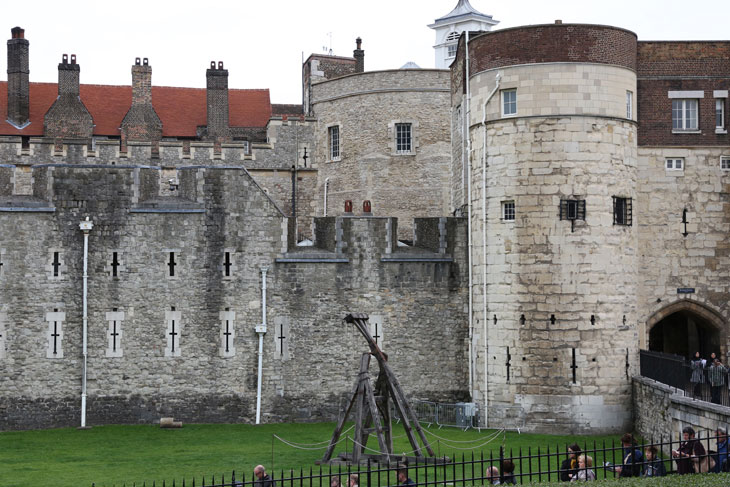
Until our visit, I didn't realize that many animals have lived in the tower. In Medieval times,
rare and exotic animals were often given to royalty as gifts, but many tragic accidents occurred
to both people and animals because there was little understanding of how to take care of them or
the dangers they posed. The animals included lions, tigers, monkeys, elephants, zebras, and even
a polar bear who was allowed to swim and hunt for fish in the Thames.
In the 19th Century. the general public could view the menagerie. The price of admission was three
half-pence or a cat or dog which was then fed to the lions. Finally, in 1826, 150 of the animals
were moved to Regent's Park, and many of the others were sold to zoos or circuses.
Artist Kendra Hast has created animals of wire mesh as a tribute to the wild animals that were
kept in the Tower of London from the 1200's until the 1800's. These wire lions stand at the entrance
to the tower.
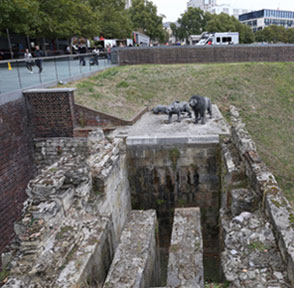
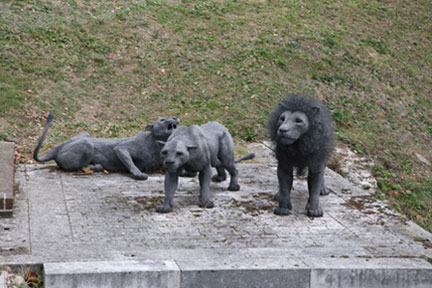
The monkeys at the Tower of London were kept in a furnished room near this spot so people could
enjoy their human-like behavior.
The picture on the left below shows Mint Street just inside the tower walls. It was established
in 1279 by Edward I, and coins continued to be made here until 1810. Working conditions were horrific,
and few mint workers managed to avoid injury. Thieves and counterfeiters were considered to be guilty
of treason and were severly punished or even executed.
Replicas of royal decor and furnishings from the 13th century have been set up in what was once
the residential section of the tower. Medieval monarchs lived elsewhere but would stay at the Tower
of London when special occasions demanded their presence. The pictures below show a small chapel,
Edward I's bedchamber, and a reproduction of King Henry III's throne.
The Tower of London consists of many buildings, but it began with The White Tower, constructed
by William the Conqueror in 1078. The massive structure, unlike anything that existed in England
at that time, was meant to spark feelings of fear and respect in the hearts of the Londoners
William had defeated.
There is a legend that says that the kingdom will fall if the six ravens that live at the
Tower of London ever leave, so seven ravens are kept there just in case. They roam freely during
the day and are caged at night. They are able to fly, but the Ravenmaster trims their flight feathers
in such a way that they are a bit unbalanced and unable to fly long distances. They are also
fed very well so there is little incentive for them to leave.
The crown jewels are the most popular attraction at the Tower of London. The line to see them is
long.
The tower was a truly fascinating place, but we still had a lot to see so it was time to move on.
Here is a picture of the Tower Bridge, our next destination, taken from the Tower of London.
Who could resist a visit to the iconic Tower Bridge? When it opened in 1894, it was a marvel of
engineering. The upper walkway allowed people to cross the bridge even when it had been opened
to allow a tall ship to pass through. It turned out, however, that people preferred to wait at
street level for the bridge to close rather than climbing the steps so the upper walkway was
closed due to lack of use.
The upper walkway was not opened again until 1982. Now an elevator carries visitors up to enjoy
the views, and a glass strip in the floor allows them to look down at the traffic and the river
below.
It is estimated that 40,000 motorists, cyclists, and pedestrians cross the bridge every day.
Here are some pictures taken from the bridge.
We crossed the bridge and wandered through narrow streets and tall buildings until we came to our
final stop of the day - a reconstruction of Shakespeare's Globe theatre. The theatre, built largely
due to the efforts of the actor and director Sam Wanamaker - sits quite close to the location of the
original theatre. Great care was given to make this reconstruction as much like the Globe that existed
in Shakespeare's day as possible. It is partially covered by the only thatched roof permitted in London
since the Great Fire of 1666. The audience sits on simple wooden benches in the boxes or stands before
the stage as people did in Shakespeare's day.
When we arrived, there were only 2 tickets left for the last tour of the day which would begin in 15
minutes. Perfect. Our informative guide is pictured on the left below.
It was pleasant to sit on the benches listening to the guide tell his stories and soaking up the
atmosphere, but the thought of standing in front of the stage for hours during a play was not appealing.
Note also, that if you are in the standing area, there is no roof. If it rains, you get wet. No umbrellas
are permitted.
The picture below shows the roof over the stage.
